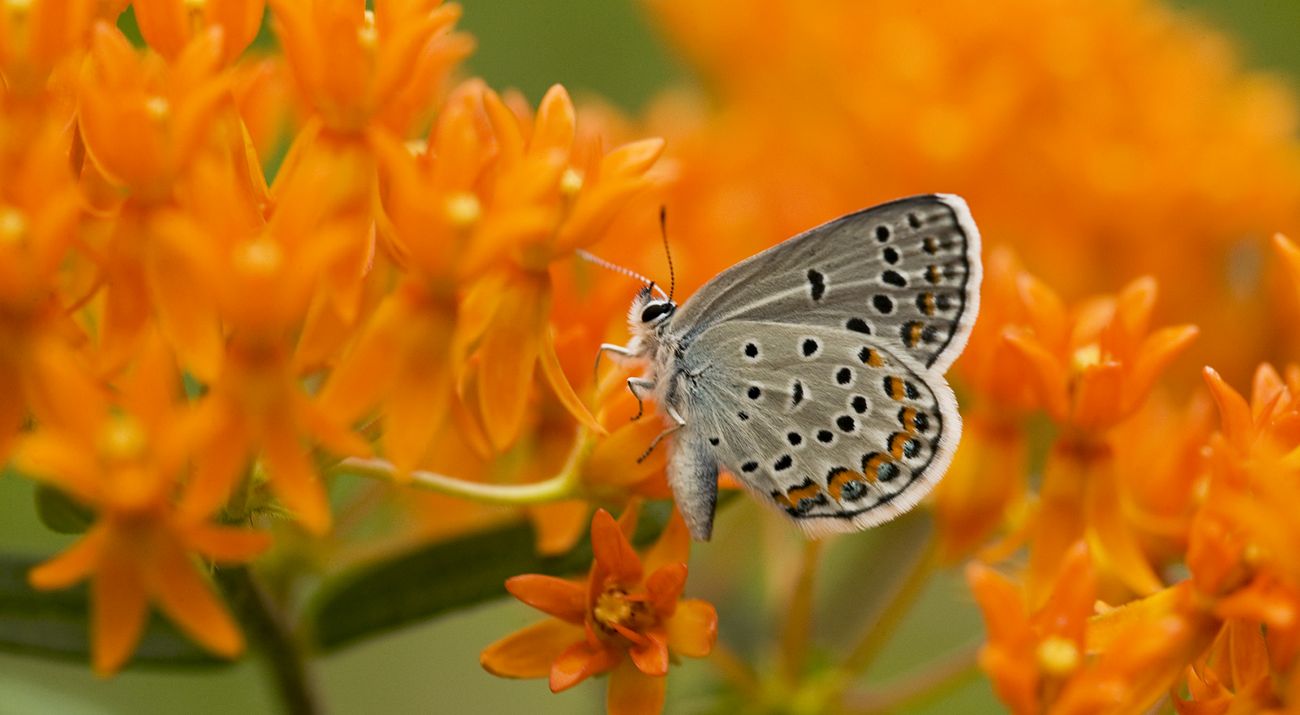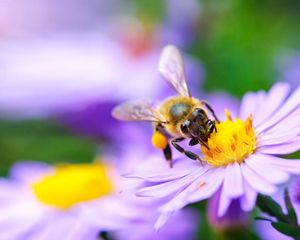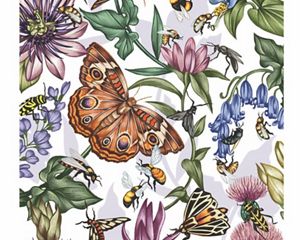Ohio Pollinators
Bees are just one example of pollinators. Butterflies and moths are extremely important pollinators, too. Learn to identify a few of our favorites.
In Ohio, insects carry the weight when it comes to pollinating. A variety of butterflies, moths, bees, wasps and beetles—aided by hardworking birds and other wildlife—keep busy at different times of the year perpetuating flowers and crops that feed people within the state and beyond our borders. Unfortunately, Ohio’s pollinators are in trouble, mostly due to habitat loss.
Throughout the state, The Nature Conservancy’s work to protect and restore these important lands helps provide pollinators with the habitats they need to survive. We rely on volunteers to help monitor our preserves and keep track of the species present. Butterfly and moth populations are two genera that our volunteers have been consistently monitoring through the years.
Ohio Butterflies
There are more than 130 species of butterflies and skippers recorded from Ohio. Many of these species rely on a specific host plant where they lay their eggs so caterpillars have an abundant source of food as they grow. They are typically brightly colored and hold some tricks in avoiding predators. It has become a popular hobby to plant pollinator gardens in the hopes of attracting Ohio's beautiful butterflies.
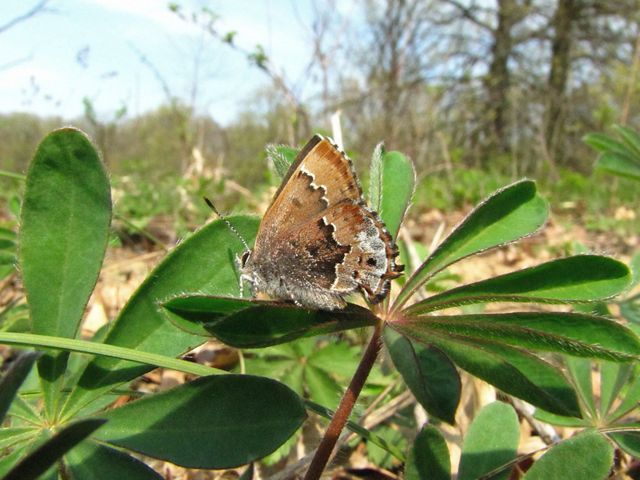
Frosted Elfin Butterfly (Callophrys irus)
The Conservancy’s Kitty Todd Preserve and the Oak Openings region are the only places where this state-endangered butterfly can be found in Ohio. These small butterflies are some of the first you will see as warm weather arrives. Their numbers have been in decline, and this species may soon be federally listed as endangered. TNC and local partners in the region are working to restore and better manage the oak savanna habitats that these butterflies prefer.
Quote: Jan Dixon

It is very hard to choose a favorite. One that I love is the Frosted Elfin which is endangered in Ohio. They have one brood only and look so interesting—very small and vulnerable—and are one of the first butterflies of the season!
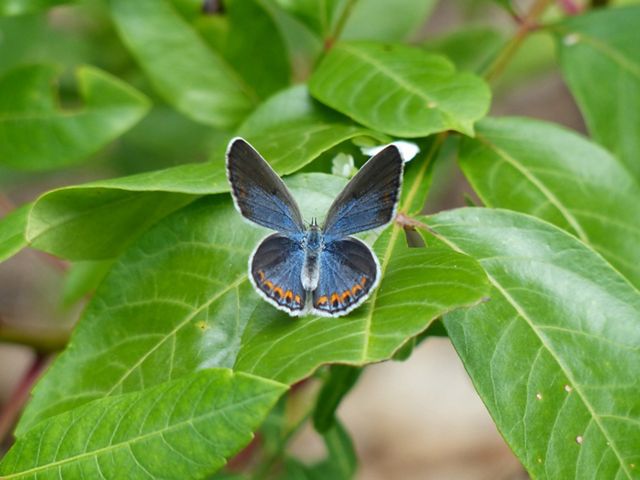
Karner Blue Butterfly (Lycaeides melissa samuelis)
Spring in Northwest Ohio boasts an abundant population of wild blue lupine, the only plant upon which the larvae of the federally-endangered Karner blue butterfly feed. The Oak Openings is the only region in the state that has the right soils to support the lupine population. The best time to see them bloom is during the month of May. Celebrate these blooms and the uniqueness of the Oak Openings region with us and the Green Ribbon Initiative Partnership during Blue Week each year.
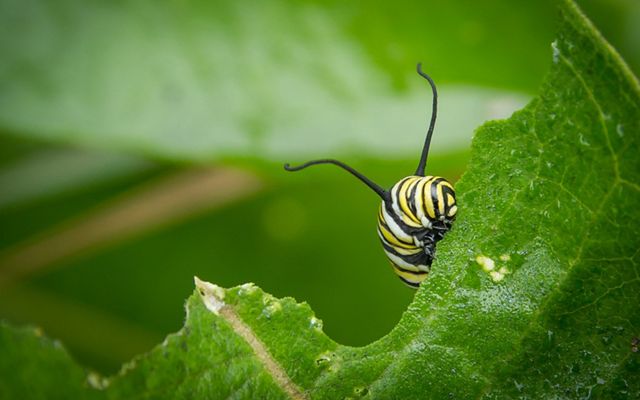
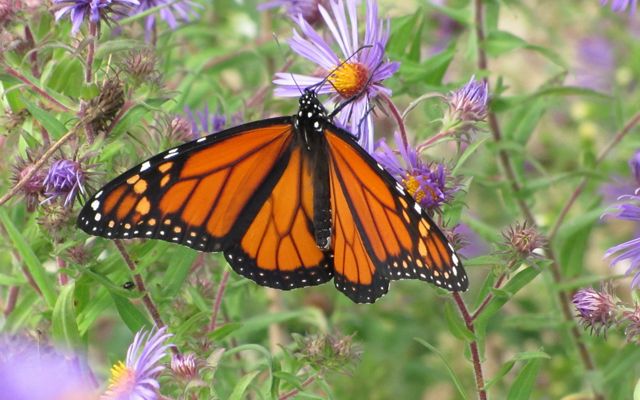
Monarch Butterfly (Danaus plexippus)
Monarch butterflies are likely the best known in Ohio and occur in all 88 counties. Monarchs are known for their long, multi-generational migration to and from Mexico. Typically, adults first arrive in Ohio in late spring and lay their eggs exclusively on milkweed plants. In fall, thousands of monarch butterflies start making their way south again. Keep your eyes peeled for this iconic species in larger numbers around September and October at our Morgan Swamp Preserve. Learn about other must-see migrations that travel through Ohio.
Quote: Angie Cole
I enjoy all aspects of the life cycle. I get just as excited to see an egg, caterpillar, or chrysalis as I do to see a butterfly.
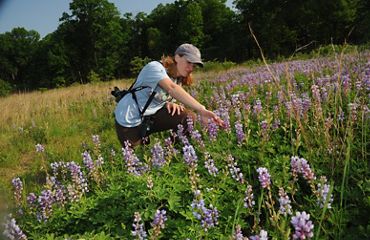
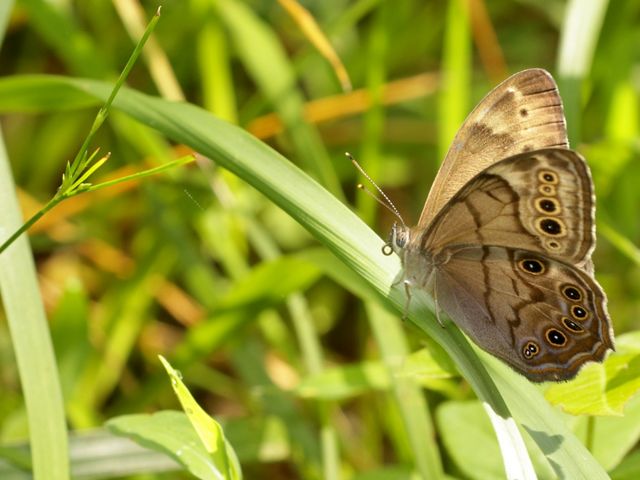
Northern Pearly-eye butterfly (Enodia anthedon)
Our volunteers report usually seeing about four northern pearly-eye butterflies each season, but in 2020 counted 23 at the Conservancy's Big Darby Creek Headwaters Nature Preserve. Its larva feeds on grasses such as bottlebrush. Our work to restore the headwaters into more natural meandering streams, reforest portions of the retired ag fields, and manage for invasive species to protect the prairie-like fields is proving beneficial to this species.
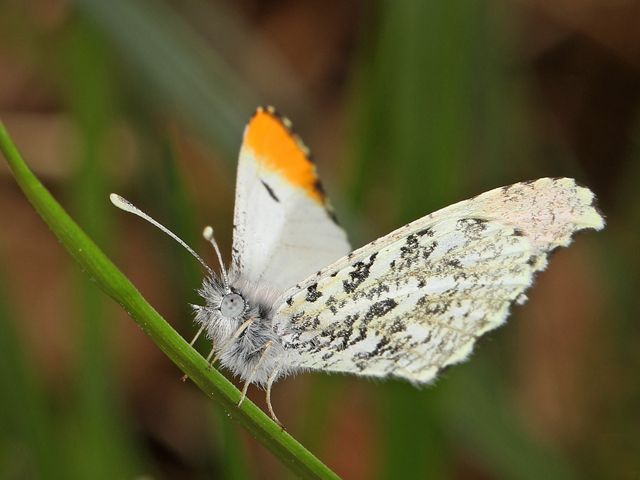
Falcate orangetip butterfly (Anthocharis midea)
A welcome sign of spring, this small butterfly depends on some of the early mustards both as a host plant and for nectar. It can be common in portions of the southern and eastern Ohio, but may be limited in other parts of the state as well. They prefer wooded areas. Search for them at our Joan Jones Portman Trail in Adams county.
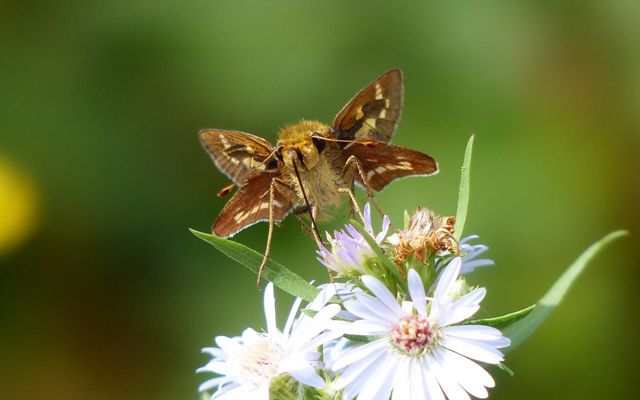
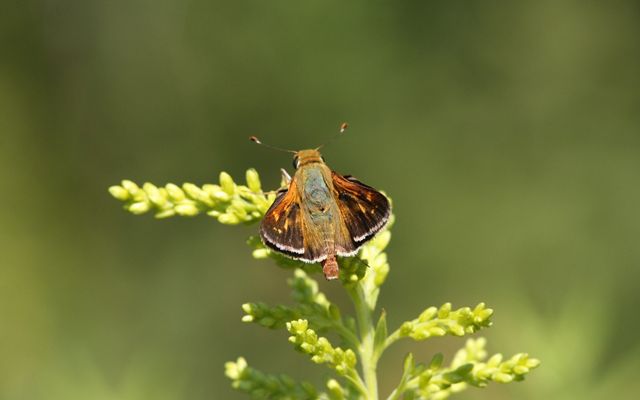
Leonard's Skipper (Hesperia leonardus)
Skippers are an intermediary between butterflies and moths. Their bodies are more stout like moths, but when resting, they tend to hold their wings upright like butterflies. Sometimes though, they hold their wings in what is called the 'jet fighter' position. This little skipper depends on the prairie grasses that the Conservancy maintains as a part of our grassland management at the Edge of Appalachia Preserve System, including both little bluestem and big bluestem.
Ohio Moths
Similar to butterflies, moths are born from eggs laid near food sources, and begin their life cycle as caterpillars before entering adulthood through metamorphosis. A primary difference is a vertical positioning of moths’ wings. Most are active at night and while some might consider them pests, they are an important piece of the ecosystem. Ohio boasts thousands of species of moths. Caterpillars in particular are an important food source and many just so happen to emerge in time for migratory birds to snack on as they fly through the state in the fall.
Blazing Star Borer Moth Habitat Restoration
TNC is conducting research in the Oak Openings to determine the correlation between restoring this moth’s host plant, dense blazing star (Liatris spicata), with the species’ recovery. It is currently listed as endangered in Ohio and an imperiled species of concern in Michigan.
Read more in our newsletter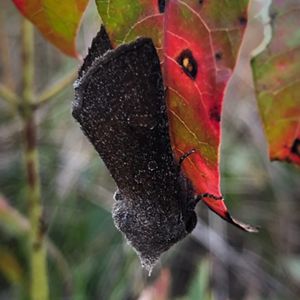
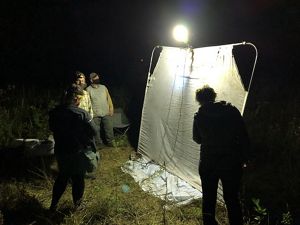
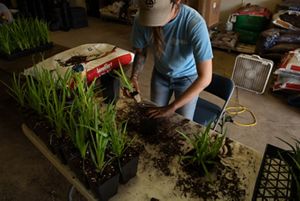
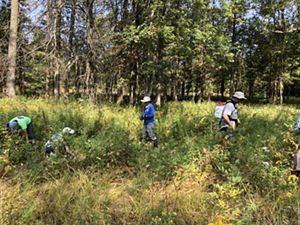
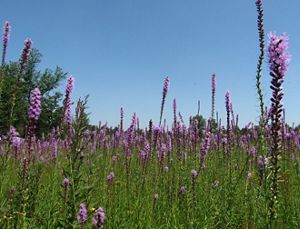

B. Star Borer Moth: Papaipema beeriana © Dave Cuthrell

Insect Survey : Looking for blazing star borer moths in the Oak Openings © Michigan State University

Blazing Star Transplanting: Blazing star plants were transplanted into bigger pots before being finished in the nursery at Toledo Metroparks, then planted outside in various preserves in the Oak Openings © Autumn McAllister

Blazing Star Planting: Volunteers planted blazing star in the Oak Openings region in the hopes of creating habitat for the blazing star borer moth. © Pete Blank/TNC

Field of Blazing Star: Blazing star plants will look similar when full grown. © Angie Cole
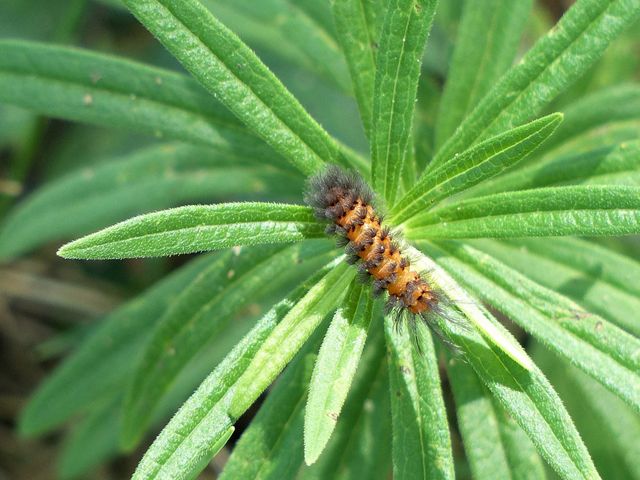
Unexpected Cycnia Moth (Cycnia collaris)
This state-endangered species of moth feeds exclusively on milkweed plants in its caterpillar stage and is most often seen on butterfly-weed (Asclepias tuberosa) as in this photo. The orange color of the caterpillars blend well with the bright orange of the butterfly-weed blooms. Adult moths are completely white. They are most active during the summer months and can be found in Ohio’s Oak Openings region and the prairie remnants of Adams county like those at our E. Lucy Braun Lynx Prairie Preserve.
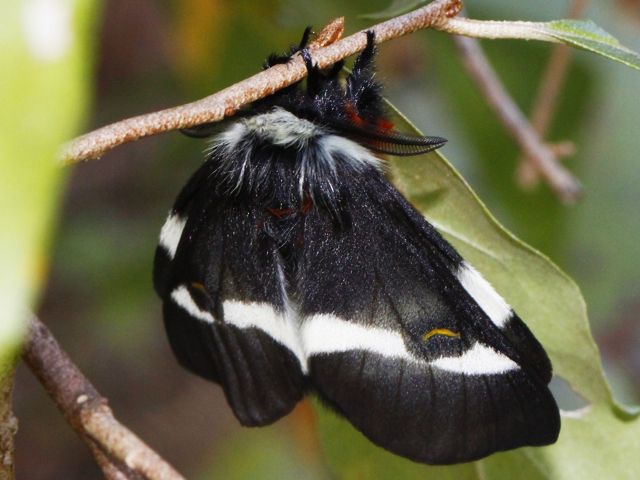
Eastern Buck Moth (Hemileuca maia)
Unlike many of their counterparts, these furry buck moths fly during the day and only later in the season, even until the first frost (October and into November). They prefer the wooded edges of Ohio’s oak forests. More common in the southern U.S. than in Ohio, we are always excited to find them at our Kitty Todd Nature Preserve or our Edge of Appalachia Preserve.
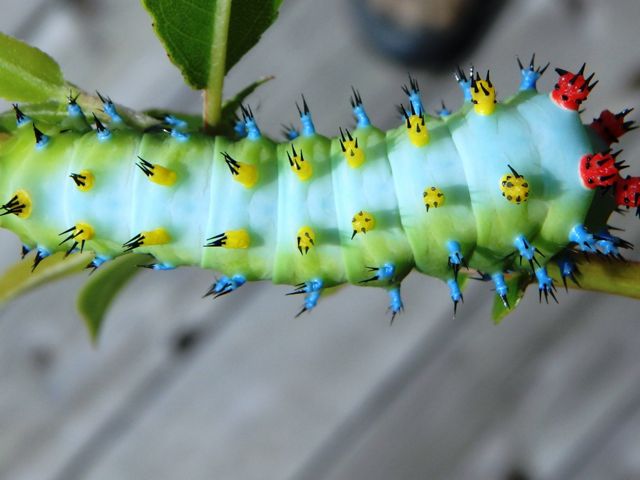
Cecropia Moth (Hyalophora cecropia)
Found throughout Ohio, the massive cecropia moth is the largest regularly-occurring moth species in the state. These moths typically prefer places where a forest meets a large open space such as an old field or meadow. Its vibrant-looking caterpillars can grow as large as a hot dog. Look for these at our Lucia S. Nash Preserve or Morgan Swamp Preserve.
Help Ohio Pollinators
Pollinators need healthy habitats. Help us protect, restore, and manage Ohio lands so pollinators can thrive.
